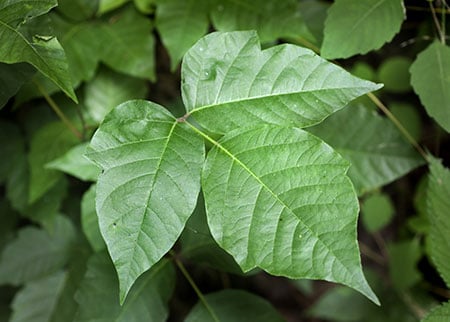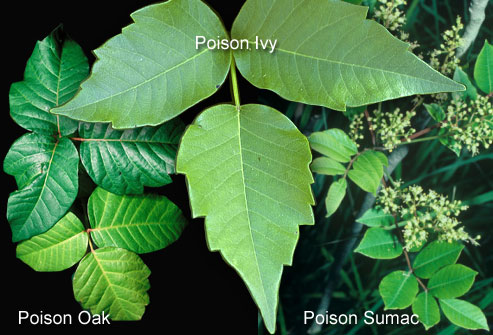
Leaves of three? Let it be!
Poison-ivy is a woody perennial. It may grow as dwarf, shrubby plants only a few centimetres high and carpeting the ground, or as upright plants 60-90 cm (2-3 ft) high, or the vine-like form may twine around trees, shrubs and posts, and reach a considerable distance above the ground. These vines often develop root-like structures which act as attachments, but apparently do not damage the living plants to which they attach themselves.
Poison ivy can be found in every province except Newfoundland. It grows on sandy, stony, or rocky shores, and sprouts in thickets, in clearings, and along the borders of woods and roadsides. This glossy perennial can spread by seed or by producing shoots from its extensive underground stems.
How might you control this poisonous plant?
Poison-ivy can be controlled by grubbing (digging) out the roots and stems as well as by the use of certain herbicides (chemical weed-killers). Herbicides offer some advantages over mechanical methods. The danger of a person receiving poison-ivy dermatitis either by direct contact with the plant or indirectly by touching contaminated tools, etc., is much less with herbicidal methods than with mechanical methods. Control of the weed is usually simpler and more effective by the careful and correct use of herbicides than by mechanical methods (It is almost impossible to remove every piece of underground stem so regrowth is likely to occur.
Also learn about Giant Hogweed

More info? http://healthycanadians.gc.ca/healthy-living-vie-saine/environment-environnement/home-maison/poisonivy-herbepuce-eng.php







